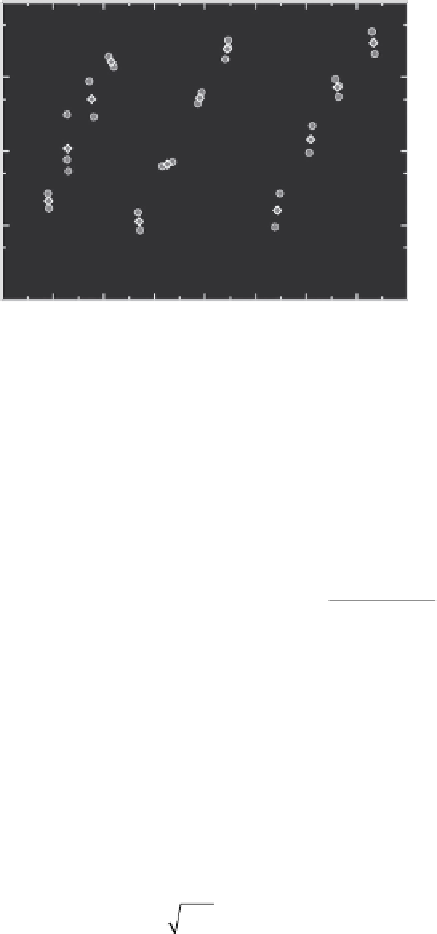Environmental Engineering Reference
In-Depth Information
10
Cs
1
T
= 554 K
530 K
508 K
0.1
0.01
0.001
6.5
7.0
7.5
8.0
8.5
9.0
9.5
10.0
10.5
Supersaturation
FIGURE 19.3
Rate of homogeneous nucleation from the supersaturated vapor of Cs versus supersaturation
ratio for different temperatures (shown in the plot) as measured in Ref. [46]. Circles, original points; diamonds,
after averaging over neighboring points.
3 3 2
/
ρ
β
2
9 3
⎛
⎜
2
⎞
⎟
8 5
9
(
R
m k T
)
(
ν
4
π σ (
R
R
)
7 2
/
sat
S
max
/
S
S
S
I
≈
π
Sn
σ
(
R
) exp
−
1
S
S
)
3 2
3
k T
B
B
β
2
9 3
⎛
⎜
π σ
⎞
⎟
(
ρ
R
m k T
)
(
ν
4
R
(
R
)
S
S
S
S
6 10
2
7 2
/
sat
max
/
≈ ×
π
Sn
σ
(
R
) exp
−
(19.61)
1
S
S
3 2
)
3
k T
B
B
The Debye frequency in Equations 19.60 and 19.61 can be evaluated in our case as
3
u
r
u
3
u
m
3
⎛
⎜
⎞
⎟
≈
3
ρ
β
ν
≈
=
(19.62)
max
2
v
l
The sound velocity can be estimated as [47]
1
κρ
β
u
≈
(19.63)
where κ is the isothermal compressibility of the bulk liquid reference phase.
As a irst iteration it is possible to solve Equation 19.61 together with the Kelvin equation [36]:
2σ
R m
k T R
(
)
S
S
ln
S
=
(19.64)
β
ρ
B
S
to obtain σ
S
and
R
S
for each point shown in Figure 19.3 (at ixed
I
,
S
, and
T
).
ν
max
is the Debye frequency for the liquid bulk phase at pressure
P
β
=
P
α
+ Δ
P
, where Δ
P
is given
by the formula [12]:
=
2σ (
R
)
S
S
Δ
P
(19.65)
R
S








Search WWH ::

Custom Search